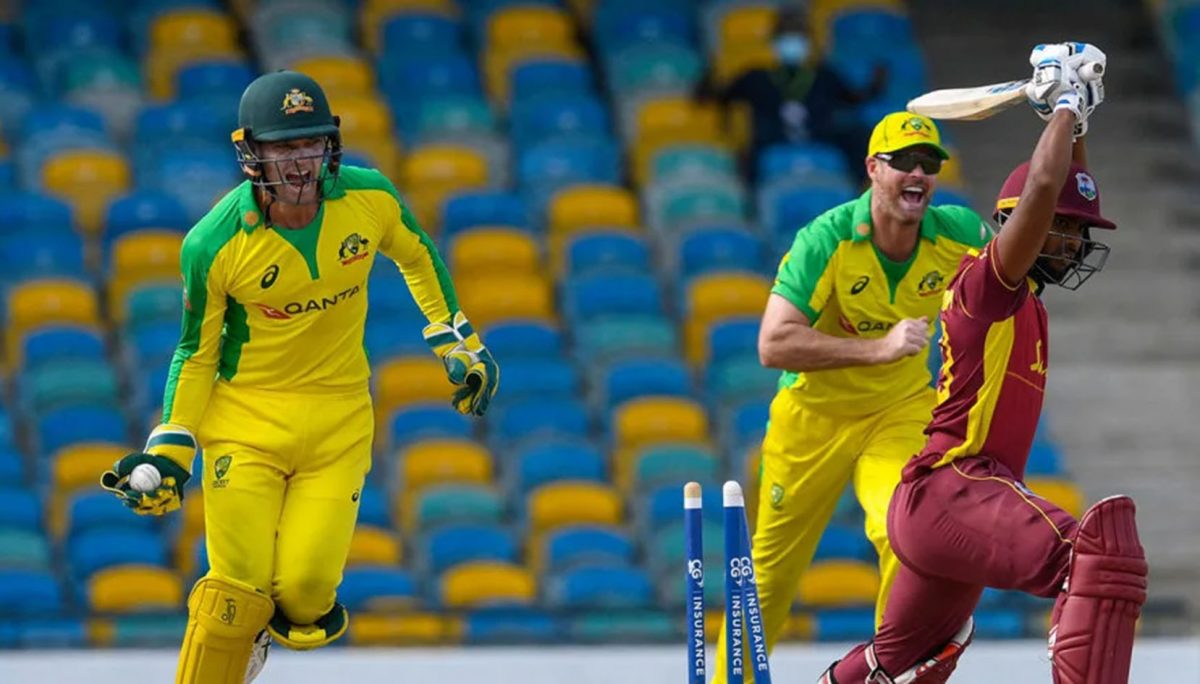
Or maybe he’s just trying to pull the wool over the eyes of the cricketing public.
In saying that the cricket pitch in Barbados was not up to international standards, Pollard, it could be argued was trying to apportion some of the blame to the conditions.
He did admit that his batsmen were culpable but the fact of the matter is that both teams batted on the wicket and Australia, who should have been less familiar with the conditions, won.
“For us it has been challenging. The thing about it is, we accept we haven’t batted well throughout this series, coming from the T20 series where the difference in stroke-play was evident,” Pollard told the Caribbean media Corporation (CMC).
“Coming here to Barbados, both teams sort of struggled on the pitch and I think that’s unacceptable for international cricket,” he added.
Pollard seems to be blaming the pitch along with his batsmen, for the team’s 1-2 series defeat to an understrength Australia side.
The pitches might have been difficult to bat on but they were not the sole reason for the team’s defeat.
If there is one aspect of cricket that was responsible for the team losing the series, that aspect would be batsmanship.
Those who have followed West Indies cricket from time immemorial, know that it’s teams have been known for their cavalier, swashbuckling approach when batting.
It is an approach that is both endearing as it is frustrating.
Endearing because whenever batsmen play the type of audacious shots that many could only wish to emulate, it is must see TV and live as well.
Frustration because whenever the same approach does not work and the team subsides to lowly totals, it is painful to watch.
In the 1970s, West Indies teams were referred to as `Calypso Cricketers’. They have since shed that tag, and their T20 sixes hitting prowess is the envy of most teams.
However, while they may be T20 world champions, in One Day cricket they are among the also rans.
It seems eons ago that the West Indies ruled the world in one-day cricket.
Sir Clive Lloyd’s teams won the inaugural World Cup in 1975 and followed that up with another triumph four years later.
But the cracks were beginning to show and after Kapil Dev’s India routed them for a below 200 score in the 1983 final, they have not won that Holy Grail again.
India had made 183 and the West Indies seemed on course for a three-peat but the batting faltered and folded for 140 in just 52 overs.
Throughout the 1980’s 1990s there have been great West Indian batsmen such as Kanhai, Kallicharran, Lloyd, Richards, Greenidge, Haynes, King, Lara, Chanderpaul, Hooper and presently, Gayle who have shown that they have the necessary pedigree to be ranked among the best in the world in One-Day cricket.
Still, the teams that they represented have been unable to reclaim the One Day throne.
Individual, sporadic brilliance will not cut it as only a sustained, collective batting effort can help arrest the West Indies’ batting decline.
What has been most noticeable is that the West Indies teams do well when batting, if the pitch is conducive to stroke play. It helps their cause.
However, even on good batting wickets they still lose since the other teams are able to overhaul their totals sometimes with relative ease.
On bad pitches, all the batsmen’s faults are laid bare, exposed for the world to see, except them.
Like the ostrich which buries its head in the sand, West Indies batsmen of today feel that they have arrived after one or two good scores.
They rarely look or work to see where they can get better, rather, they are too busy making ridiculous excuses that just won’t cut mustard to any cricket aficionado worth his salt.
For Pollard and company One Day cricket is not T20 cricket.
It’s not hit out or get out. It calls for application, discipline and the rebuilding of partnerships whenever a wicket falls. This rebuilding effort sometimes takes 10 overs before the batsmen are able to `play themselves in’.
Once the batsmen are set, then and only then, should they begin the process of accelerating the run rate. It’s not to be done as soon as you get in.
One should not have to be telling professional cricketers how to play the game they are being paid handsomely for.
It’s not that it’s easy to be an international cricketer, one recognizes that. However, batsmen should put heavy prices on their wickets and not be dismissed the same way over and over.
Everyone wants the West Indies team to do well. West Indies cricket is the most exciting commodity on the world stage but many argue that West Indies players are too talented for the teams to be so mediocre and play mediocre cricket.
The World T20 triumph at the ICC’s showpiece event some years ago brought the region great joy and there is no happier and contented West Indian fan, like when the team does well. Conversely, West Indian fans are bitter and angry whenever the team does not live up to expectation.
The West Indies One-Day team should be reminded that batting performances like the ones in the just concluded One-Day series against Australia have hurt the region terribly.
One hopes that they will do better going forward. We know they can. It is entirely up to them. The goal should be nothing short of winning another One Day World Cup competition.
It’s that simple!






